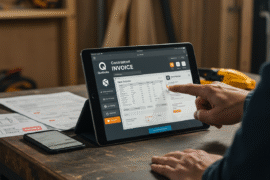This article may contain references to products or services from one or more of our advertisers or partners. We may receive compensation when you click on links to those products or services. Nonetheless, our opinions are our own.
The information presented in this article is accurate to the best of our knowledge at the time of publication. However, information is subject to change, and no guarantees are made about the continued accuracy or completeness of this content after its publication date.
- Key Highlights
- Knowing the Cost of Dental School and How Tuition Works
- Finding Scholarships and Grants for Dental Students
- Understanding Student Loans: Types, Options, and Payback Plans
- Making a Budget to Handle Living Costs While in Dental School
- The Importance of Part-Time Jobs and Internships to Pay for Your Education
- Planning for Your Future: Investing in Your Dental Career
- Employment Outlook for Dentists
- Federal Work-Study Programs for Dental Students
- State Dental School Debt Forgiveness Programs
- Public Programs for Loan Forgiveness in Healthcare and Community Help
- Frequently Asked Questions
- Recommended Reads
Key Highlights
- Dental school can cost more than $300,000, including tuition and living expenses.
- Funding options include scholarships, grants, federal loans, and part-time work.
- Good budgeting and strategic planning are key to long-term financial stability.
Knowing the Cost of Dental School and How Tuition Works
As you start your journey to become a dentist, it’s essential to understand the costs of dental school. Tuition can vary widely depending on the school, usually from $20,000 to $80,000 per year. Including extra costs like books, supplies, and living expenses can easily exceed $300,000 over four years. To plan effectively, you should break down the different components of dental education costs.
- Tuition Fees: This is usually the most significant portion of your costs.
- Books and Supplies: Plan to spend around $2,000–$3,000 yearly.
- Living Expenses: Rent, utilities, and food can total about $18,000–$30,000 annually.
- Instruments and Equipment: Expect to spend about $5,000 during your first year.
- Insurance and Fees: Health insurance and other fees may add another $1,500–$2,000 annually.
Here’s a simplified table of estimated annual costs:
| Expense Type | Estimated Cost ($) |
|---|---|
| Tuition | 40,000 |
| Books & Supplies | 2,500 |
| Living Expenses | 25,000 |
| Instruments | 5,000 |
| Insurance and Fees | 1,500 |
| Total Estimated Cost | 74,000 |
Becoming a dentist is not just a dream; it’s also a significant financial investment. Keeping track of these costs will help you make smart decisions as you explore scholarships, financial aid, and other funding options.
Finding Scholarships and Grants for Dental Students
Scholarships and grants can significantly reduce the amount you need to borrow for dental school. These opportunities provide financial support while recognizing your dedication and potential in the field. Consider the following sources:
- University Scholarships: Many dental schools offer scholarships based on merit or need. Check with your financial aid office for program details.
- State and Federal Grants: Look into state-specific programs and federal grants such as the Pell Grant.
- Professional organizations: Groups like the American Dental Association often award scholarships to dental students.
- Community Programs: Local nonprofits and health organizations may support students who commit to working in underserved areas after graduation.
- Research Grants: If you’re interested in research, look for grants supporting innovative dental science projects.
Here’s a summary of potential sources:
| Source | Type | Eligibility |
|---|---|---|
| University Scholarships | Merit-based/Need-based | Varies by institution |
| Pell Grant | Federal Grant | Undergraduate students with financial need |
| ADA Scholarships | Professional Organization | Graduate dental students |
| Community Health Funds | Local Programs | Commitment to serve in underserved areas |
| Research Grants | Project Funding | Students involved in dental research |
By applying for these opportunities, you can reduce financial stress and focus on your education and career goals.
Understanding Student Loans: Types, Options, and Payback Plans
Understanding the different types of student loans is essential when funding your dental education. Federal direct loans generally offer lower interest rates and more flexible repayment plans than private loans. It’s wise to prioritize federal options since they often include benefits like income-driven repayment and loan forgiveness.
Overview of common loan types:
| Loan Type | Interest Rate | Repayment Options |
|---|---|---|
| Federal Direct Subsidized | Fixed; varies annually | Flexible; deferment available |
| Federal Direct Unsubsidized | Fixed; varies annually | Flexible; interest accrues immediately |
| Private Loans | Variable/Fixed | Varies by lender |
In addition to loans, continue to explore scholarships and grants throughout your program. Many schools update their aid packages annually. After graduation, income-driven repayment plans or loan forgiveness programs—especially for those working in underserved areas—can help manage debt. Planning can reduce your future financial burden.
Making a Budget to Handle Living Costs While in Dental School
Creating a realistic budget during dental school is essential. Start by identifying your income sources, such as student loans, part-time work, or family support. Then track your fixed expenses (like rent and insurance) and variable expenses (like groceries and entertainment).
Example of a monthly budget:
| Expense Type | Monthly Estimate ($) |
|---|---|
| Rent | 1,000 |
| Utilities | 150 |
| Groceries | 300 |
| Transportation | 150 |
| Miscellaneous | 100 |
Review your spending alongside your income to make adjustments. Prioritize needs over wants and set aside funds for emergencies. Budgeting tools and apps can help you stay organized and on track.
Voted "Best Overall Budgeting App" by Forbes and WSJ
Monarch Money helps you budget, track spending, set goals, and plan your financial future—all in one app.
Get 50% OFF your first year with code MONARCHVIP
The Importance of Part-Time Jobs and Internships to Pay for Your Education
Balancing a part-time job or internship with dental school can be challenging but beneficial. These opportunities can help offset expenses and strengthen your resume.
Consider the following roles:
- Dental Assistance: Gain hands-on experience in a clinical setting.
- Research Assistant: Contribute to academic projects, potentially leading to publications.
- Peer tutoring: Reinforce your knowledge while supporting fellow students.
Internships may offer stipends or academic credit, easing financial stress. Choose positions aligned with your career goals—they can provide both practical experience and valuable connections.
| Job Type | Potential Benefits |
|---|---|
| Dental Assistant | Clinical experience, hourly wage |
| Internship | Stipend, academic credit, networking opportunities |
| Research/Teaching Assistant | Academic expertise, CV enhancement |
With thoughtful planning, part-time jobs and internships can become valuable to your financial strategy.
Planning for Your Future: Investing in Your Dental Career
A career in dentistry is rewarding, but long-term financial planning is crucial. Federal loans usually have better rates and repayment options than private loans. Scholarships and grants from schools and professional organizations can further reduce debt.
Some schools also offer payment plans, allowing you to spread tuition over time and reduce short-term financial pressure. A financial outline can help you match expected costs with available funding.
| Expense Type | Estimated Cost ($) |
|---|---|
| Tuition | 50,000/year |
| Books & Supplies | 2,000/year |
| Living Expenses | 15,000/year |
Planning early and using all available resources can build a strong financial foundation, reduce debt, and provide peace of mind as you advance in your dental career.
Employment Outlook for Dentists
As you begin dental school, consider opportunities supporting your education and finances. Internships can provide pay, academic credit, and networking. Choose roles aligned with your long-term goals—such as dental assisting, research, or teaching assistantships—to gain clinical experience, strengthen your resume, and earn income. These roles improve your skills while easing financial pressure.
Federal Work-Study Programs for Dental Students
Federal Work-Study Programs offer dental students part-time employment while in school. These jobs—on campus or with approved employers—allow students to earn money to cover educational costs. These programs also provide valuable work experience and offer flexible schedules that complement academic commitments.
State Dental School Debt Forgiveness Programs
State programs offer loan forgiveness to dental graduates who work in underserved areas. These initiatives improve access to dental care while helping new dentists manage their student debt. Research the requirements and benefits in your state to determine if you qualify.
Public Programs for Loan Forgiveness in Healthcare and Community Help
Public service and healthcare-based loan forgiveness programs support dental graduates who work for nonprofits, public health agencies, or approved organizations. Understanding the eligibility and application process is key to maximizing these opportunities. By combining multiple loan assistance options, you can better manage your finances while building your career in dentistry.
Frequently Asked Questions
What are the main ways to pay for dental school?
Options include federal student loans, private loans, scholarships, grants, and school-offered payment plans. Exploring all available resources will help you find the best strategy.
How can I apply for federal student loans?
Complete the Free Application for Federal Student Aid (FAFSA). This form determines eligibility for federal aid, including loans. Submit it before the deadline to access the most support.
What kinds of scholarships can dental students get?
Universities, professional organizations, nonprofits, and private foundations offer scholarships. Both merit-based and need-based awards are available.
Are there grants for dental students?
Yes. Government and professional programs offer grants to students with financial need or those who agree to work in underserved areas after graduation.

Reviewed and edited by Albert Fang.
See a typo or want to suggest an edit/revision to the content? Use the contact us form to provide feedback.
At FangWallet, we value editorial integrity and open collaboration in curating quality content for readers to enjoy. Much appreciated for the assist.
Did you like our article and find it insightful? We encourage sharing the article link with family and friends to benefit as well - better yet, sharing on social media. Thank you for the support! 🍉
Article Title: How to Afford Dental School: Navigating 0K Costs with Smart Funding Strategies
https://fangwallet.com/2025/03/26/how-to-afford-dental-school/The FangWallet Promise
FangWallet is an editorially independent resource - founded on breaking down challenging financial concepts for anyone to understand since 2014. While we adhere to editorial integrity, note that this post may contain references to products from our partners.
The FangWallet promise is always to have your best interest in mind and be transparent and honest about the financial picture.
Become an Insider

Subscribe to get a free daily budget planner printable to help get your money on track!
Make passive money the right way. No spam.
Editorial Disclaimer: The editorial content on this page is not provided by any of the companies mentioned. The opinions expressed here are the author's alone.
The content of this website is for informational purposes only and does not represent investment advice, or an offer or solicitation to buy or sell any security, investment, or product. Investors are encouraged to do their own due diligence, and, if necessary, consult professional advising before making any investment decisions. Investing involves a high degree of risk, and financial losses may occur including the potential loss of principal.
Source Citation References:
+ Inspo
There are no additional citations or references to note for this article at this time.












































